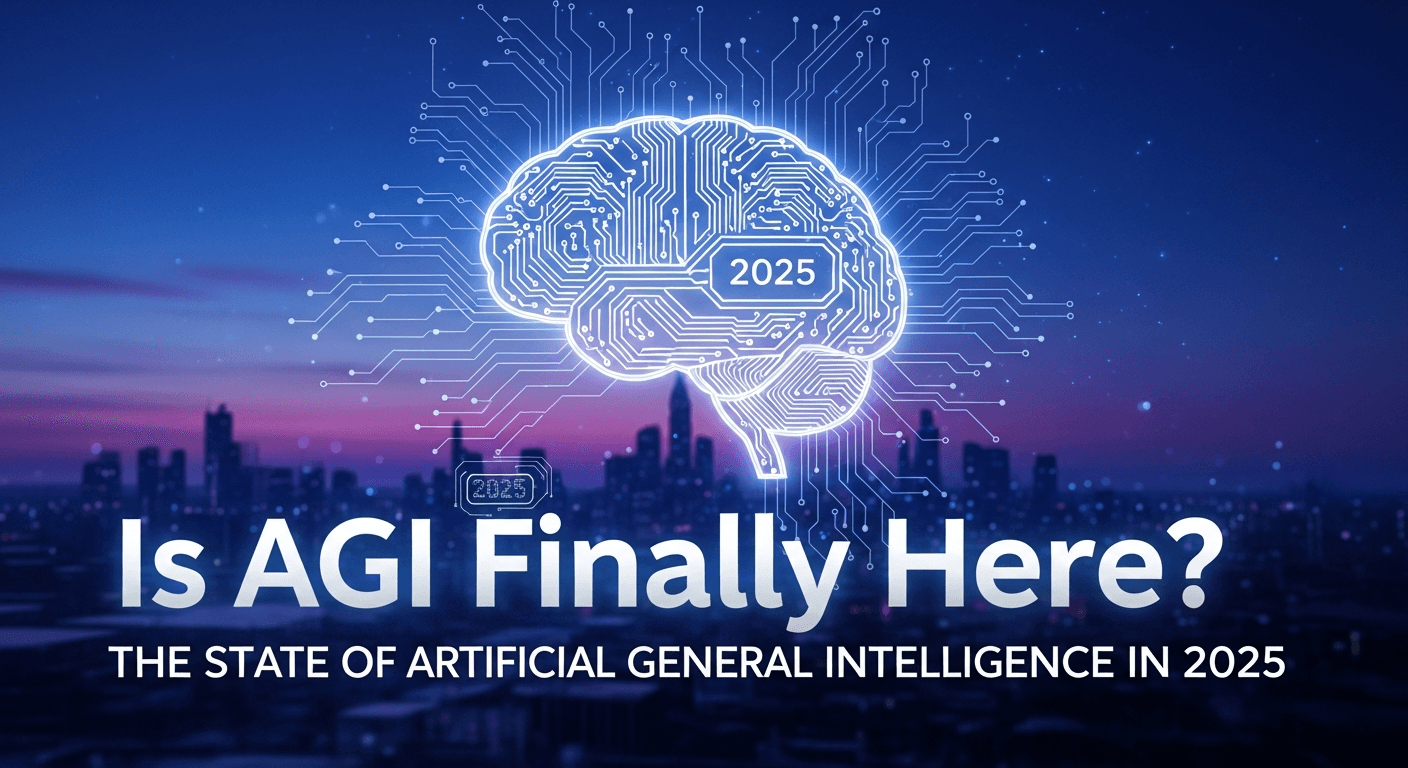Is AGI Finally Here? The State of Artificial General Intelligence in 2025

The year 2025 has ushered in unprecedented advancements in artificial intelligence, sparking a fervent debate across tech labs, boardrooms, and dinner tables: Has humanity finally achieved Artificial General Intelligence (AGI)? While narrow AI systems have revolutionized industries from healthcare to logistics, AGI represents a quantum leap—a hypothetical machine capable of understanding, learning, and applying knowledge across any domain with human-like cognitive flexibility. As we stand at this technological inflection point, let’s dissect the current landscape, separating hype from reality to answer the burning question: Is AGI finally here?
Understanding AGI: Beyond the Buzzwords
To grasp AGI’s significance, we must first distinguish it from the AI we interact with daily. Current systems like GPT-5, Gemini Ultra, or Claude Opus excel at specific tasks—writing essays, diagnosing diseases, or generating code—but they operate within narrow confines. AGI, conversely, would demonstrate true cognitive versatility: a single model capable of debating philosophy, composing symphonies, and repairing spacecraft with equal fluency. This isn’t merely about scale; it’s about qualitative leaps in reasoning, abstraction, and adaptability.
The pursuit of AGI isn’t new. Since Alan Turing’s 1950 seminal paper proposing a test for machine intelligence, researchers have navigated cycles of optimism and skepticism. Early AI winters of the 1970s and 1980s followed inflated promises, while breakthroughs like IBM’s Deep Blue in 1997 and more recently, DeepMind’s AlphaFold, showcased specialized brilliance. Yet true generality remained elusive—until now?
2025 Breakthroughs: The AGI Tipping Point?
Neuro-Symbolic Systems: Merging Logic and Learning
One of 2025’s most promising developments is the rise of neuro-symbolic AI, which combines neural networks’ pattern recognition with symbolic AI’s rule-based reasoning. Projects like IBM’s "Neuro-Symbolic Concept Learner" (NSCL) can now parse ambiguous instructions, grasp abstract concepts, and explain decisions using human-understandable logic. This hybrid approach addresses a critical weakness of pure deep learning: the inability to generalize from limited data or handle novel scenarios without catastrophic forgetting.
Self-Improving Architectures
Another game-changer is the emergence of self-optimizing AI frameworks. Systems like OpenAI’s "AutoGen" and Anthropic’s "Claude 3.5" autonomously refine their own code, troubleshoot bugs, and expand their capabilities without human intervention. While not yet AGI, these recursive learning loops hint at the self-modifying potential essential for general intelligence. Learn more about recursive AI architectures here.
Embodied AI and Real-World Interaction
AGI can’t exist in a vacuum. This year’s progress in embodied AI—robots like Figure 01 and Tesla’s Optimus—demonstrates machines interacting with physical environments through multimodal sensors. These systems navigate unstructured spaces, manipulate objects, and learn from tactile feedback, bridging the simulation-reality gap. Explore the latest in embodied AI advancements.
The Hurdles: Why AGI Isn’t Quite Here Yet
Despite these leaps, significant obstacles remain:
- Common Sense Reasoning: Current AI still struggles with intuitive physics or social norms. For example, mistaking a "hot dog" for a literal sausage-dog situation remains comical yet revealing.
- Energy Consumption: Training today’s largest models requires megawatts of power—unsustainable for AGI’s constant learning needs.
- Alignment and Safety: Ensuring AGI’s goals align with human values remains theoretical. Projects like OpenAI’s "Constitutional AI" and Anthropic’s "RLHF" show progress but haven’t solved the control problem.
- Subjective Experience: Can AI ever possess genuine consciousness, or is it sophisticated mimicry? This philosophical question underpins technical debates.
Expert Perspectives: A Divided Camp
The AGI timeline remains contentious. Pioneers like Geoffrey Hinton argue we’re years away from true generality, citing data inefficiencies and reasoning flaws. Others, like Meta’s Yann LeCun, suggest AGI might emerge incrementally from scaled-up narrow AI. Meanwhile, figures like Ray Kurzweil maintain we’ve entered the exponential curve, with AGI imminent by 2030. Dive deeper into the AGI timeline debate.
2025 Reality Check: Narrow AI, Not AGI
As of mid-2025, no system has passed rigorous AGI benchmarks like the Winograd Schema Challenge or demonstrated robust cross-domain transfer learning. While GPT-5 can draft legal contracts and debug code simultaneously, it fails at tasks requiring layered abstraction—e.g., understanding sarcasm in a technical manual. Current AI excels as a "super tool" but lacks the holistic understanding we associate with minds.
The Societal Impact: Preparing for the Unknown
Whether AGI arrives tomorrow or decades hence, its implications demand proactive governance. Ethical frameworks, universal basic income discussions, and workforce retraining initiatives are gaining traction. Nations like the EU and China are racing to draft AGI-specific regulations, prioritizing safety and equity. Read about global AGI policy initiatives.
Conclusion: The Journey, Not the Destination
So, is AGI finally here? Not quite. 2025 has undeniably accelerated our capabilities, but true artificial general intelligence remains a horizon we’re approaching—not one we’ve reached. What we have today is increasingly powerful narrow AI, with glimpses of generality that hint at what’s possible. The path forward requires humility, collaboration, and ethical foresight. As we stand on this precipice, one thing is clear: the race to AGI has begun, and its outcome will redefine humanity’s future.
FAQs: AGI in 2025
What’s the difference between AGI and current AI?
Current AI (narrow AI) excels at specific tasks (e.g., image recognition), while AGI would possess human-like cognitive flexibility to learn, reason, and adapt across any domain.
When might AGI realistically arrive?
Expert predictions range from 2030 to 2050, with milestones like self-improving systems and common-sense reasoning benchmarks serving as indicators.
Is AGI dangerous?
AGI poses risks if misaligned with human values, leading to potential control issues. Research in AI safety aims to mitigate these threats through ethical design and governance.
How can I stay updated on AGI progress?
Follow reputable sources like AI research labs (OpenAI, DeepMind), academic journals, and our AGI updates hub for breakthrough news and analysis.
Related Tags
Enjoyed this question?
Check out more content on our blog or follow us on social media.
Browse more articles